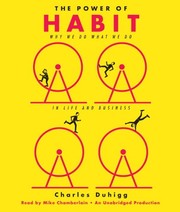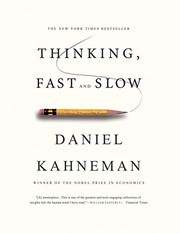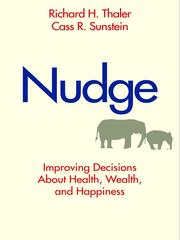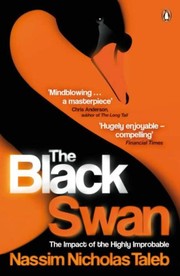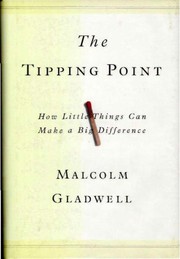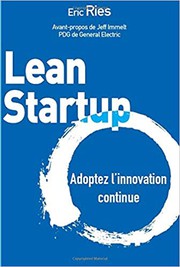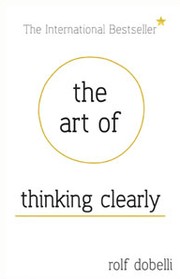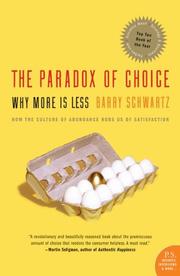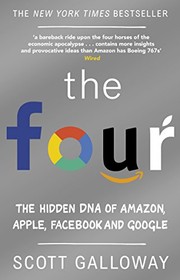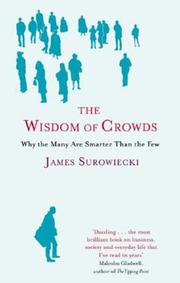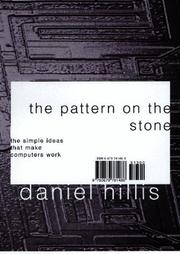If you’re fascinated by the intricate and mesmerizing world of patterns, then you’re in for a treat. Whether you’re a designer, an artist, a mathematician, or simply a pattern enthusiast, there’s a book on patterns out there that will surely captivate your imagination. From the mesmerizing symmetry of Islamic art to the mathematical beauty of fractals, the world of patterns is as diverse as it is enchanting. In this article, we’ll explore the 20 best patterns books that are sure to inspire and delight anyone with an appreciation for the beauty of repetition and symmetry.
Contents
- 1 20 Best Patterns Books
- 2 The Power of Habit
- 3 Thinking, Fast and Slow
- 4 Nudge: Improving Decisions About Health, Wealth, and Happiness
- 5 Influence: The Psychology of Persuasion
- 6 Predictably Irrational: The Hidden Forces That Shape Our Decisions
- 7 Sapiens: A Brief History of Humankind
- 8 The Black Swan: The Impact of the Highly Improbable
- 9 The Tipping Point: How Little Things Can Make a Big Difference
- 10 The Innovator’s Dilemma: When New Technologies Cause Great Firms to Fail
- 11 The Lean Startup: How Today’s Entrepreneurs Use Continuous Innovation to Create Radically Successful Businesses
- 12 The Design of Everyday Things
- 13 The Art of Thinking Clearly
- 14 The Paradox of Choice: Why More Is Less
- 15 The Four: The Hidden DNA of Amazon, Apple, Facebook, and Google
- 16 The Wisdom of Crowds
- 17 The Innovators: How a Group of Hackers, Geniuses, and Geeks Created the Digital Revolution
- 18 The Signal and the Noise: Why So Many Predictions Fail – But Some Don’t
- 19 The Fifth Discipline: The Art & Practice of The Learning Organization
- 20 The Structure of Scientific Revolutions
- 21 The Pattern On The Stone: The Simple Ideas That Make Computers Work
- 22 Final Thoughts on Best Patterns Books
- 23
20 Best Patterns Books
The Power of Habit
by Charles Duhigg
The Power of Habit by Charles Duhigg is a captivating exploration of the science behind our habits and how they shape our lives. Duhigg delves into the neurological and psychological mechanisms that drive our behaviors, revealing the powerful impact of habits on individual and societal levels. This insightful book on patterns examines how habits are formed, how they can be changed, and the profound implications of understanding and harnessing this knowledge.
Duhigg weaves together engaging anecdotes, cutting-edge research, and practical strategies to illustrate the transformative potential of identifying and altering our habits. He offers compelling examples, from the success of companies like Starbucks to the transformation of individuals struggling with addiction, to demonstrate the profound influence of habits on productivity, health, and personal growth. With clear and compelling writing, Duhigg empowers readers to take control of their habits and ultimately, their lives. Whether you’re seeking to break a bad habit or establish a new, positive routine, this patterns book is an invaluable guide to understanding the power of habit.
Thinking, Fast and Slow
by Daniel Kahneman
Thinking, Fast and Slow by Daniel Kahneman is a groundbreaking book on patterns of thought and decision-making. In this insightful work, Kahneman, a Nobel Prize-winning psychologist, explores the two systems that drive the way we think: the fast, automatic, and intuitive system, and the slow, deliberate, and analytical system. He delves into the cognitive biases and errors that affect our judgment and decision-making, shedding light on how our minds often rely on shortcuts and heuristics, leading to predictable patterns of irrationality.
This patterns book offers a fascinating look at the complexities of human thought processes, providing readers with a deeper understanding of the ways in which our minds make sense of the world and make decisions. With engaging anecdotes and thought-provoking experiments, Kahneman challenges readers to question their own thinking and consider the implications of these patterns in their everyday lives. Thinking, Fast and Slow is a compelling exploration of the intricate patterns that shape our thoughts and behaviors, and a must-read for anyone interested in psychology, decision-making, and human behavior.
Nudge: Improving Decisions About Health, Wealth, and Happiness
by Richard H. Thaler and Cass R. Sunstein
Nudge: Improving Decisions About Health, Wealth, and Happiness is a groundbreaking book on patterns by Richard H. Thaler and Cass R. Sunstein. The authors explore the concept of ‘choice architecture’ and how small, subtle changes can have a big impact on decision-making. They delve into the psychology of decision-making and how people can be nudged towards making better choices without restricting their freedom.
The book about patterns is filled with real-world examples and practical strategies for applying these principles to improve decision-making in various aspects of life, including personal finance, health, and public policy. Thaler and Sunstein argue that by understanding how people think and make decisions, individuals and organizations can design environments that make it easier for people to make choices that are in their best interest.
Nudge is a thought-provoking and insightful patterns book that challenges the way we think about decision-making and provides valuable insights for anyone looking to understand and improve their own decision-making processes.
Influence: The Psychology of Persuasion
by Robert B. Cialdini
Influence: The Psychology of Persuasion by Robert B. Cialdini is a fascinating exploration of the psychology behind persuasion and influence. The book delves into the various tactics and techniques that are used to sway people’s decisions, from the subtle to the overt. Cialdini explores the underlying principles and patterns that drive human behavior and decision-making, shedding light on how these patterns can be harnessed to influence others.
Through real-life examples and psychological research, Cialdini uncovers the six key principles of influence, including reciprocity, scarcity, authority, consistency, liking, and social proof. He illustrates how these patterns are used in marketing, sales, and everyday interactions, and provides valuable insights into how to resist unwarranted influence.
Whether you’re a marketer, salesperson, or simply curious about the psychology of persuasion, Influence offers a thought-provoking and eye-opening exploration of the patterns that shape our decisions and behaviors.
Predictably Irrational: The Hidden Forces That Shape Our Decisions
by Dan Ariely
Predictably Irrational: The Hidden Forces That Shape Our Decisions by Dan Ariely is a captivating exploration of the hidden influences that affect our decision-making. In this thought-provoking book on patterns, Ariely delves into the fascinating world of behavioral economics, revealing the irrational tendencies that govern our choices. Through a series of engaging experiments and real-life examples, the author sheds light on the predictable patterns that underlie our seemingly irrational behaviors. With a blend of wit and insight, Ariely challenges the conventional wisdom about human decision-making and uncovers the subconscious forces at play in our everyday lives.
Sapiens: A Brief History of Humankind
by Yuval Noah Harari
Sapiens: A Brief History of Humankind by Yuval Noah Harari is a riveting exploration of the patterns and evolution of human history. In this thought-provoking book about patterns, Harari takes readers on a journey through the history of our species, from the emergence of Homo sapiens in Africa to the present day. He delves into the various patterns of human behavior, societal structures, and cultural developments that have shaped our world. Through a combination of anthropology, biology, and history, Harari offers fresh insights into the patterns that have defined our species and the impact they have had on our planet. This patterns book challenges readers to reconsider their understanding of human history and contemplate the direction in which our species is heading. Sapiens is a compelling and illuminating read that will captivate anyone with an interest in the patterns of human civilization.
The Black Swan: The Impact of the Highly Improbable
by Nassim Nicholas Taleb
The Black Swan by Nassim Nicholas Taleb is a thought-provoking book about the impact of highly improbable events, challenging the way we perceive the world. Taleb introduces the concept of ‘black swans’ to describe rare and unpredictable events that have a massive impact, such as financial crises or technological breakthroughs. The book delves into the human tendency to seek patterns and make predictions, despite the existence of unpredictable and rare events that can derail our expectations. Taleb argues that traditional risk assessment methods often fail to account for these ‘black swans’, leading to disastrous consequences. He advocates for a more robust and flexible approach to decision-making that acknowledges the existence of unpredictable events. Through captivating storytelling and insightful analysis, Taleb encourages readers to embrace uncertainty and complexity, challenging the conventional wisdom of predicting the future. The Black Swan is a patterns book that will revolutionize the way you think about risk, uncertainty, and the nature of success.
The Tipping Point: How Little Things Can Make a Big Difference
by Malcolm Gladwell
The Tipping Point: How Little Things Can Make a Big Difference by Malcolm Gladwell is a fascinating exploration of the concept of ‘tipping points’ and the small changes that can lead to major shifts in society. This thought-provoking book delves into the idea that certain phenomena have a tipping point, where they spread like wildfire and become significant trends, while others fizzle out. Gladwell examines various case studies and real-life examples to illustrate how small, seemingly insignificant factors can lead to major changes, from the spread of infectious diseases to the popularity of trends and products. This book about patterns reveals the underlying principles behind how ideas, behaviors, and products reach a critical mass and tip into widespread acceptance. With its engaging storytelling and insightful analysis, The Tipping Point is a thought-provoking read for anyone interested in understanding the dynamics of social trends and the powerful impact of small changes.
The Innovator’s Dilemma: When New Technologies Cause Great Firms to Fail
by Clayton M. Christensen
The Innovator’s Dilemma, written by Clayton M. Christensen, is a groundbreaking book about patterns in business and technology. It explores the challenges that successful companies face when disruptive innovations emerge, causing them to struggle and eventually fail. Christensen presents a compelling argument that these companies often fall victim to their own success, as they become too focused on satisfying current customers and overlook the potential of new technologies. The book dives into the patterns of behavior and decision-making that lead to this dilemma, offering valuable insights into how companies can navigate these challenges and stay ahead of the curve. Through in-depth case studies and analysis, Christensen illustrates how even the most well-managed and innovative companies can be blindsided by disruptive changes in the market. The Innovator’s Dilemma is a must-read for anyone interested in understanding the patterns of success and failure in the ever-evolving landscape of business and technology.
The Lean Startup: How Today’s Entrepreneurs Use Continuous Innovation to Create Radically Successful Businesses
by Eric Ries
The Lean Startup is a revolutionary book on patterns in entrepreneurship that introduces a new approach to building and growing a successful business. In this book about patterns, Eric Ries challenges traditional business practices and advocates for a more efficient and effective method of innovation. He emphasizes the importance of continuous innovation, rapid experimentation, and validated learning in order to create radically successful businesses.
Ries introduces the concept of the ‘Build-Measure-Learn’ feedback loop, where entrepreneurs test their hypotheses, gather data, and make informed decisions based on customer feedback. By following this framework, startups can minimize wasted time and resources, and ultimately increase their chances of success.
With insightful case studies and practical advice, The Lean Startup is a must-read for aspiring entrepreneurs, business leaders, and anyone interested in the future of business. This patterns book is a game-changer, providing a roadmap for building sustainable and thriving businesses in today’s fast-paced and competitive market.
The Design of Everyday Things
by Don Norman
The Design of Everyday Things by Don Norman is a captivating exploration of the psychology behind the objects that surround us. This thought-provoking book delves into the principles of design and the impact it has on our daily lives. With a focus on usability and user experience, Norman reveals the intricate patterns and intricacies behind the objects we interact with on a daily basis. From door handles to smartphones, he unveils the hidden connections between human behavior and the design of everyday objects. Through engaging anecdotes and real-life examples, Norman provides valuable insights into the importance of intuitive design and the impact it has on our daily interactions. This patterns book is an essential read for anyone interested in the psychology of design and the intricate relationships between humans and the objects they interact with. The Design of Everyday Things is an enlightening and enriching journey into the world of design and the patterns that shape our everyday experiences.
The Art of Thinking Clearly
by Rolf Dobelli
The Art of Thinking Clearly by Rolf Dobelli is a fascinating exploration of the various cognitive biases and thinking errors that can cloud our decision-making. Through a series of short, engaging chapters, Dobelli delves into the common patterns of reasoning and judgment that often lead us astray. This insightful book on patterns provides practical examples and real-life scenarios, allowing readers to recognize and avoid these pitfalls in their own lives. Whether it’s the ‘book on patterns’ of overconfidence, the ‘book about patterns’ of confirmation bias, or the ‘patterns book’ of loss aversion, Dobelli offers valuable insights into how our minds work and how we can think more clearly. With its accessible writing style and thought-provoking content, The Art of Thinking Clearly is a must-read for anyone interested in improving their decision-making skills.
The Paradox of Choice: Why More Is Less
by Barry Schwartz
The Paradox of Choice: Why More Is Less by Barry Schwartz is a thought-provoking book that delves into the idea that having too many options can actually make us less happy. Through real-life examples and psychological research, Schwartz explores how the abundance of choices in modern society can lead to decision paralysis, increased anxiety, and a reduced sense of satisfaction. This patterns book uncovers the consequences of having too many options and provides valuable insights into how we can navigate the overwhelming array of choices that we face on a daily basis. Whether it’s choosing a career path, selecting a product, or making life-altering decisions, Schwartz’s book about patterns challenges the conventional wisdom that more choices lead to greater happiness. By understanding the psychological impact of excessive options, readers can learn to make more informed and satisfying decisions, ultimately leading to a more fulfilling life.
The Four: The Hidden DNA of Amazon, Apple, Facebook, and Google
by Scott Galloway
The Four: The Hidden DNA of Amazon, Apple, Facebook, and Google by Scott Galloway is a compelling book about patterns that delves into the strategies and characteristics that have propelled these tech giants to the forefront of the digital age. Galloway explores the common patterns and practices that have contributed to the success of these companies, offering insights into their business models, leadership styles, and impact on the global economy.
Through in-depth analysis and engaging storytelling, Galloway uncovers the unique patterns that have allowed Amazon, Apple, Facebook, and Google to dominate their respective industries and reshape the way we live, work, and connect with one another. The patterns book offers a fascinating look at the inner workings of these powerhouse companies, shedding light on the factors that have propelled them to unprecedented levels of success.
Whether you’re a business enthusiast, tech aficionado, or simply curious about the forces driving the digital revolution, The Four provides a captivating exploration of the patterns that have shaped the modern business landscape.
The Wisdom of Crowds
by James Surowiecki
The Wisdom of Crowds by James Surowiecki is a fascinating exploration of collective decision-making and the power of group intelligence. Surowiecki delves into the idea that large groups of people are often better at solving problems, making decisions, and predicting outcomes than individual experts. Through a series of engaging examples and case studies, the book demonstrates how diverse groups of people, when brought together, can leverage their individual knowledge and insights to form remarkably accurate and insightful collective judgments.
At its core, The Wisdom of Crowds is a patterns book, revealing the underlying dynamics and mechanisms that allow groups to tap into their collective wisdom. Surowiecki discusses the conditions necessary for groups to make successful decisions, the role of diversity in enhancing group intelligence, and the importance of decentralized decision-making. The book about patterns offers valuable insights for leaders, decision-makers, and anyone interested in understanding the complexities of human behavior and the power of collective intelligence.
The Innovators: How a Group of Hackers, Geniuses, and Geeks Created the Digital Revolution
by Walter Isaacson
The Innovators: How a Group of Hackers, Geniuses, and Geeks Created the Digital Revolution by Walter Isaacson is a fascinating exploration of the individuals and collaborative efforts that shaped the digital age. This patterns book delves into the stories of visionaries such as Ada Lovelace, Alan Turing, and Steve Jobs, as well as the teams and communities that drove technological innovation forward.
Isaacson’s book about patterns examines the patterns of creativity, collaboration, and disruption that have defined the digital revolution. Through engaging storytelling and meticulous research, he uncovers the patterns of thought and action that have propelled the development of computers, the internet, and other groundbreaking technologies.
By highlighting the interconnectedness of these innovators and the patterns of innovation that emerged from their work, Isaacson provides a compelling narrative of how the digital world we know today came to be. The Innovators is a must-read for anyone interested in understanding the patterns of progress and change that have shaped our technological landscape.
The Signal and the Noise: Why So Many Predictions Fail – But Some Don’t
by Nate Silver
The Signal and the Noise, authored by Nate Silver, is a captivating book about the art and science of prediction. In this groundbreaking book, Silver explores the challenges of separating the meaningful data, or the signal, from the irrelevant noise that often clouds our judgment. Through a combination of engaging storytelling and rigorous analysis, he delves into the world of forecasting, using real-world examples to illustrate the pitfalls and successes of various prediction methods.
With a keen eye for detail and a knack for simplifying complex concepts, Silver takes readers on a journey through the world of statistics, probability, and decision-making. By exploring the patterns that underlie successful predictions and the errors that lead to failures, The Signal and the Noise offers valuable insights for anyone seeking to make sense of the countless streams of information that inundate our daily lives.
Whether you’re a data enthusiast, a professional forecaster, or simply curious about the mysteries of prediction, this patterns book is sure to leave you with a deeper understanding of the challenges and opportunities that come with trying to anticipate the future.
The Fifth Discipline: The Art & Practice of The Learning Organization
by Peter M. Senge
The Fifth Discipline: The Art & Practice of The Learning Organization by Peter M. Senge is a groundbreaking book on organizational development and management. Senge introduces the concept of the ‘learning organization’ and focuses on the importance of cultivating a culture of continuous learning and adaptation within companies. He emphasizes the interconnectedness of all the elements within an organization and highlights the significance of systems thinking in understanding and addressing complex problems. The book delves into the idea of ‘mental models’ and how they shape our perceptions and actions, and also explores the concept of ‘shared vision’ and its role in aligning individuals towards a common goal. Senge also discusses the ‘disciplines’ required for creating a learning organization, which include personal mastery, team learning, and building a shared understanding of complex systems. The Fifth Discipline is a thought-provoking patterns book that offers valuable insights for leaders and managers seeking to create sustainable and adaptive organizations.
The Structure of Scientific Revolutions
by Thomas S. Kuhn
The Structure of Scientific Revolutions by Thomas S. Kuhn is a groundbreaking book on paradigms in the scientific community. Kuhn introduces the concept of “paradigm shifts” and argues that scientific progress is not a linear accumulation of knowledge, but rather a series of revolutionary changes in the way we understand the world. He explains how scientific communities operate within a set of established beliefs and practices, which he refers to as “paradigms.” Kuhn’s book about patterns in scientific development challenges the traditional view of scientific evolution and offers a new perspective on how scientific revolutions occur. Through compelling examples and thorough analysis, Kuhn demonstrates how these shifts in thinking have shaped the course of scientific history. This patterns book has had a profound impact on the philosophy of science and continues to influence our understanding of how scientific knowledge evolves.
The Pattern On The Stone: The Simple Ideas That Make Computers Work
by Daniel Hillis
The Pattern On The Stone: The Simple Ideas That Make Computers Work by Daniel Hillis is a fascinating exploration of the fundamental concepts that underpin the workings of computers. This illuminating book delves into the intricate world of algorithms, data structures, and the patterns that form the foundation of computer science.
Hillis takes readers on a captivating journey through the inner workings of computers, unraveling complex ideas in a clear and accessible manner. With a keen focus on simplicity and clarity, the author masterfully explains the intricate patterns that govern the functioning of computers, making this book a valuable resource for anyone seeking a deeper understanding of how computers operate.
Whether you are a tech enthusiast, a computer science student, or simply curious about the workings of the digital world, The Pattern On The Stone is a must-read. This patterns book will leave you with a newfound appreciation for the elegant simplicity of the ideas that drive modern technology.
Final Thoughts on Best Patterns Books
Exploring the world of Patterns through literature can be both enlightening and inspiring. The 20 best books about patterns offer a diverse range of perspectives, from mathematical and scientific patterns to cultural and artistic motifs. Whether you’re interested in the intricacies of tessellations, the rhythmic patterns of language, or the repetitive designs found in nature, these books provide a rich tapestry of knowledge and creativity. Dive into these captivating reads and uncover the beauty and complexity of patterns in our world.
Which book about Patterns is best?
The best book on Patterns can vary with personal preference, but three widely recommended titles are:
- The Power of Habit by Charles Duhigg,
- Thinking, Fast and Slow by Daniel Kahneman,
- Nudge: Improving Decisions About Health, Wealth, and Happiness by Richard H. Thaler and Cass R. Sunstein.
Each offers valuable insights and could be a great starting point.
What are the best books to learn about Patterns?
For those looking to learn about Patterns, there is a wealth of literature that can provide a comprehensive understanding of the subject. Some of the most highly recommended books include:
- The Power of Habit by Charles Duhigg,
- Thinking, Fast and Slow by Daniel Kahneman,
- Nudge: Improving Decisions About Health, Wealth, and Happiness by Richard H. Thaler and Cass R. Sunstein,
- Influence: The Psychology of Persuasion by Robert B. Cialdini,
- Predictably Irrational: The Hidden Forces That Shape Our Decisions by Dan Ariely,
- Sapiens: A Brief History of Humankind by Yuval Noah Harari,
- The Black Swan: The Impact of the Highly Improbable by Nassim Nicholas Taleb,
- The Tipping Point: How Little Things Can Make a Big Difference by Malcolm Gladwell,
- The Innovator’s Dilemma: When New Technologies Cause Great Firms to Fail by Clayton M. Christensen,
- The Lean Startup: How Today’s Entrepreneurs Use Continuous Innovation to Create Radically Successful Businesses by Eric Ries
These books offer a range of perspectives on Patterns, covering various aspects and approaches to the subject.
What are the best books about Patterns?
The best books about Patterns are:
- The Power of Habit by Charles Duhigg,
- Thinking, Fast and Slow by Daniel Kahneman,
- The Design of Everyday Things by Don Norman,
- The Art of Thinking Clearly by Rolf Dobelli,
- The Tipping Point: How Little Things Can Make a Big Difference by Malcolm Gladwell,
- Sapiens: A Brief History of Humankind by Yuval Noah Harari.
Each offers unique insights into the subject. While these books about Patterns are highly regarded, it’s important to note that any list of ‘best’ books is subjective and reflects a range of opinions.
What are the best Patterns books of all time?
Choosing the best Patterns books of all time can vary depending on who you ask, but five titles that are often celebrated include
- The Power of Habit by Charles Duhigg,
- Thinking, Fast and Slow by Daniel Kahneman,
- Predictably Irrational: The Hidden Forces That Shape Our Decisions by Dan Ariely,
- The Tipping Point: How Little Things Can Make a Big Difference by Malcolm Gladwell,
- and The Design of Everyday Things by Don Norman.
Each of these books has made a significant impact in the field of Patterns and continues to be influential today.

